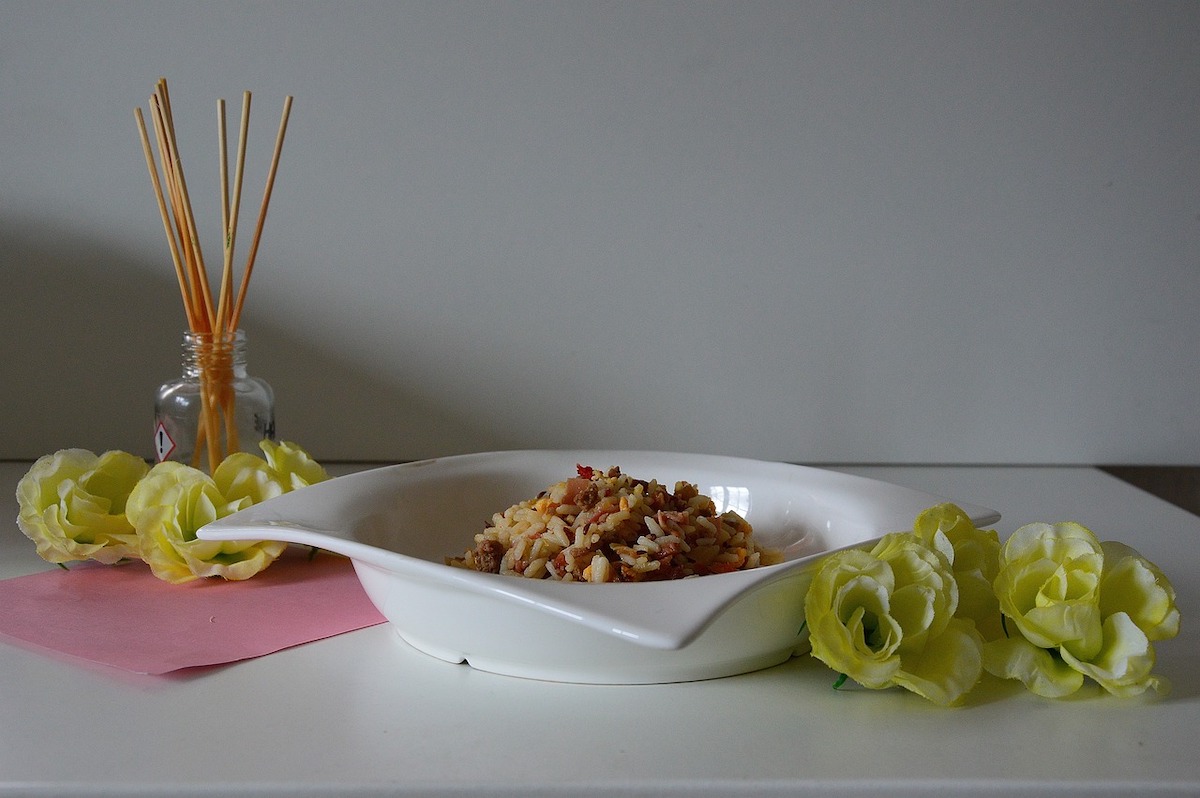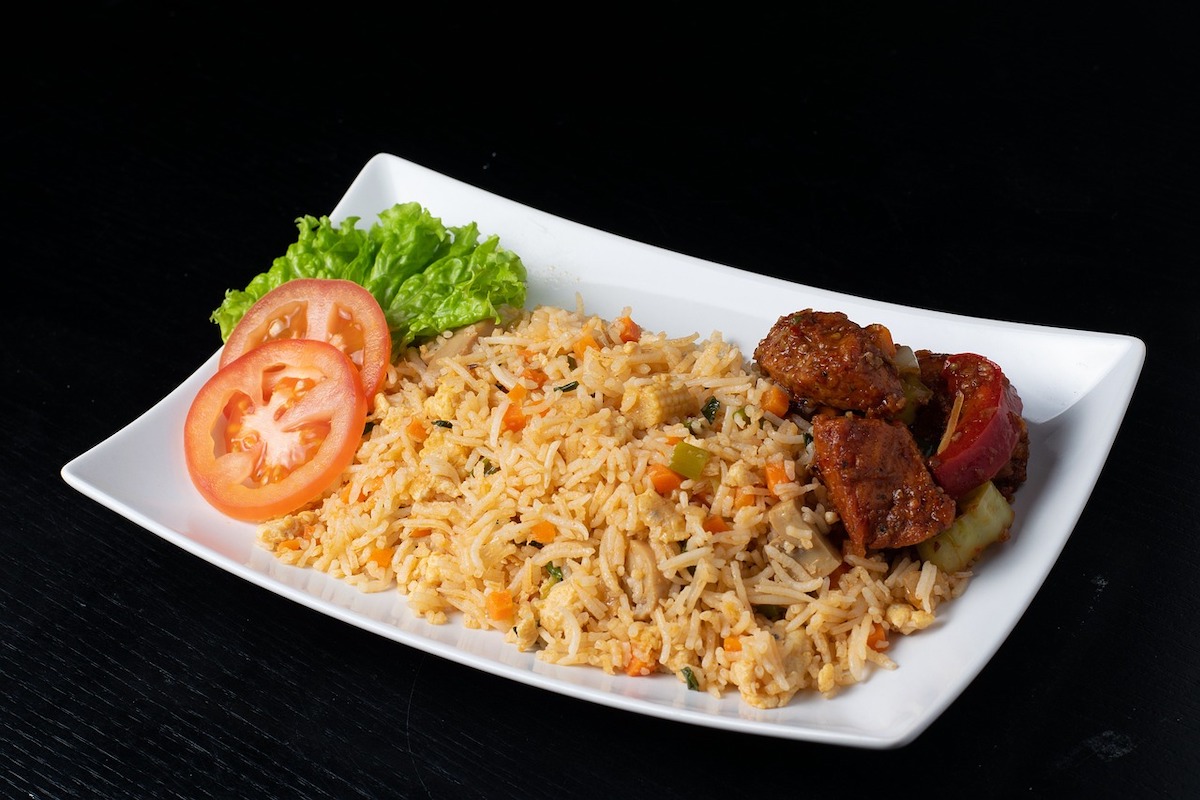
The Delicious History of Nasi Goreng: The National Dish of Indonesia (Plus a Recipe to Make Your Own!)
By: Sarah Stone
Skip to Section
Article Summary
Nasi Goreng – Indonesia’s national dish of fried rice – is a simple yet flavorful meal you’ll find everywhere from street vendors to traditional restaurants across the country.
You’ll learn about this centuries-old comfort food that started with Chinese traders and evolved through Dutch and Malay influences to become the versatile dish Indonesians eat for breakfast, lunch, and dinner. The article walks you through the key ingredients – rice, soy sauce, and kecap manis (sweet soy sauce) – plus regional variations from Java to Bali, and includes a traditional recipe so you can make this crispy, fragrant dish at home.
- Nasi Goreng combines stir-fried rice with soy sauce, kecap manis, and spices, typically topped with a fried egg and crispy shallots.
- Different regions add their own spin – Central Java uses tempeh and sambal, West Java adds seafood, Bali incorporates coconut and peanuts, and West Sumatra includes rendang.
- The dish originated from Chinese stir-frying techniques and absorbed Dutch and Malay influences during the colonial period.
- Cold, day-old rice works best for achieving the perfect crispy texture when making Nasi Goreng at home.
- Kecap manis is the secret ingredient that gives Nasi Goreng its signature sweet-savory taste – you can make your own by mixing equal parts soy sauce and palm sugar.
Nasi Goreng, meaning “fried rice” in Indonesian, is a beloved dish you can find in almost every area of the country. This simple, flavorful meal consists of stir-fried rice seasoned with a blend of sauces, chilies, and kecap manis—a sweet soy sauce that’s a staple condiment in Indonesian cuisine.
This dish is considered the national food of Indonesia, and has been a staple for centuries—it can be eaten for breakfast, lunch, and dinner, and you can find Nasi Goreng at nearly every street food vendor, food court, and traditional restaurant across the country. Many locals consider Nasi Goreng a comfort food.
Let’s dive into the history of Nasi Goreng, and explore what makes this dish so unique, what’s in it, how to make it, and why it’s considered the national food of Indonesia.
What is Nasi Goreng?
Nasi Goreng is a simple, flavorful meal made by stir-frying rice with various spices, soy sauce, and kecap manis. You’ll typically find the dish served with a fried egg, prawn crackers, and a sprinkle of bawang goreng (deep-fried shallots) to add extra texture and flavor.
“Nasi Goreng” is rice: the base of the dish. The rice is cooked until fluffy and dry, which makes it easy to stir fry. Soy sauce adds a savory umami flavor, while kecap manis provides a sweet and syrupy taste. You can also add spices like shallot, garlic, and chili.
The unique taste and texture of Nasi Goreng are a result of the combination of these ingredients. The rice is crispy and fragrant, while the soy sauce and kecap manis balance savory and sweet flavors. In addition, the spices give the dish a subtle spicy kick, making it a satisfying and comforting meal.
Many regional variations of Nasi Goreng are found throughout Indonesia, each with unique characteristics and ingredients. Here are just a few:
- Central Java: You may find Nasi Goreng served with a side of tempeh (fermented soybean cake) and doused with a spicy sambal sauce. If you’re traveling to Surakarta (Solo), you may find Nasi Goreng served with tempeh and a side of lalap, a vegetable dish made of greens such as water spinach or Chinese broccoli.
- West Java: Seafood such as prawns and squid are often added to the dish to give it a distinct taste—you’ll find this especially popular in Jakarta.
- Bali: It’s common to add shredded coconut and peanuts for added texture and flavor here. In the town of Ubud, Nasi Goreng is known for incorporating freshly grated coconut and crushed peanuts for added texture and flavor.
- West Sumatra: Here, Nasi Goreng is known for using rendang—a rich and spicy beef curry—as an ingredient in the dish. Travel to Padang, where you’ll find that the meal is served with beef rendang, giving a rich and spicy taste.
The History of Nasi Goreng
Nasi Goreng has a history that can trace back to ancient China. The Chinese traders and migrants who came to the Indonesian archipelago brought a technique of stir-frying rice with various ingredients—as the dish evolved and became adopted by the local communities, it began to incorporate more local flavors and components such as kecap manis, as well as spices like shallot, garlic, and chilies.
During the colonial period, Nasi Goreng absorbed influences from other cultures, such as the Dutch and Malay. The Dutch introduced the use of meat—particularly bacon—in the dish. The Malay community introduced rempah, a blend of spices that includes lemongrass, turmeric, ginger, and others that are a staple in many traditional Malay dishes.
One of the reasons why Nasi Goreng is so prevalent in Indonesia is its versatility. It’s a simple dish that can be made with almost any kind of meat or vegetable, making it an affordable and easily accessible meal for many people. It is also a typical street food available in many parts of the country, making it an easy option if you’re on the go.

Image by Wilhelmus Hengstmengel from Pixabay
How to Make Nasi Goreng
Nasi Goreng is a deceptively simple dish—achieving the perfect texture and flavor takes a bit of practice. Here’s a traditional recipe for making Nasi Goreng:
Ingredients:
- 2 cups of cooked, cold rice
- 2 cloves of garlic, minced
- 1 small onion, diced
- 1 small red chili pepper, diced (optional)
- 2 tablespoons of vegetable oil
- 2 tablespoons of soy sauce
- 2 tablespoons of kecap manis (sweet soy sauce)
- Salt and pepper to taste
- 2 eggs, beaten (optional)
- 3 green onions, sliced (optional)
- Fried shallots (optional)
Instructions:
- Heat the oil in a large pan or wok over medium-high heat.
- Add the garlic and onion, and sauté until the onion is translucent.
- If desired, add the diced red chili pepper and sauté for another minute.
- Add the cold rice to the pan and stir well to combine with the garlic, onion, and chili pepper.
- Add the soy sauce, kecap manis, and salt and pepper; stir well to coat the rice evenly.
- If desired, push the rice to one side of the pan and add the beaten eggs to the other side. Scramble the eggs until cooked, and then mix them into the rice. Alternatively, you can fry your egg rather than scramble it.
- Serve the Nasi Goreng in a bowl and garnish with green onions and fried shallots if desired.
To achieve the perfect texture and flavor, refrigerate cold, leftover rice overnight before starting the dish; the starch in the rice helps to bind everything together and gives the meal a nice crispiness. While you should generally use vegetable oil for the Nasi Goreng, some like to add peanut oil, which has a higher smoke point and adds a nutty flavor.
Kecap manis is crucial for the Nasi Goreng’s signature sweet-savory taste—if you don’t have your own, you can mix equal parts soy sauce and palm sugar (or you can buy some here). To make your meal less sweet, reduce the amount of kecap manis or use light soy sauce as an alternative. Alternative spices we’d recommend are curry powder and chili powder.
You can make Nasi Goreng with different meats, seafood, and vegetables. Common variations include adding prawns, chicken, beef, or even tofu. Some people like to add a fried egg on top of the dish to add an extra layer of flavor and texture.
Ready to Try It?
Making Nasi Goreng at home is easy and fun, and there are so many variations of the dish that cater to different taste preferences. Experiment a bit, and check out different recipe blogs for advice on how to make this versatile meal exactly the way you want!
And of course…if you have the chance to visit Indonesia, try some Nasi Goreng and let the Frayed Passport community know what you think!
About the Author
 As the editor-in-chief of Frayed Passport, my goal is to help you build a lifestyle that lets you travel the world whenever you want and however long you want, and not worry about where your next paycheck will come from. I've been to 20+ countries and five continents, lived for years as a full-time digital nomad, and have worked completely remotely since 2015. If you would like to share your story with our community, or partner with Frayed Passport, get in touch with me using the form on our About page.
As the editor-in-chief of Frayed Passport, my goal is to help you build a lifestyle that lets you travel the world whenever you want and however long you want, and not worry about where your next paycheck will come from. I've been to 20+ countries and five continents, lived for years as a full-time digital nomad, and have worked completely remotely since 2015. If you would like to share your story with our community, or partner with Frayed Passport, get in touch with me using the form on our About page.Featured image by Laura Lanckriet on Unsplash
Information published on this website and across our networks can change over time. Stories and recommendations reflect the subjective opinions of our writers. You should consult multiple sources to ensure you have the most current, safe, and correct details for your own research and plans.
Frayed Passport is a participant in the Amazon Associates Program, an affiliate advertising program designed to provide a means for sites to earn advertising fees by advertising and linking to Amazon.com. We also may share links to other affiliates and sponsors in articles across our website.





